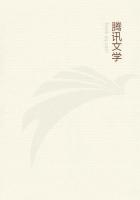Spurred on by the success attained by the more experienced and better known aviators numerous inventors of lesser fame are almost daily producing practical flying machines varying radically in construction from those now in general use.
One of these comparatively new designs is the Van Anden biplane, made by Frank Van Anden of Islip, Long Island, a member of the New York Aeronautic Society. While his machine is wholly experimental, many successful short flights were made with it last fall (1909). One flight, made October 19th, 1909, is of particular interest as showing the practicability of an automatic stabilizing device installed by the inventor. The machine was caught in a sudden severe gust of wind and keeled over, but almost immediately righted itself, thus demonstrating in a most satisfactory manner the value of one new attachment.
Features of Van Anden Model.
In size the surfaces of the main biplane are 26 feet in spread, and 4 feet in depth from front to rear. The upper and lower planes are 4 feet apart. Silkolene coated with varnish is used for the coverings. Ribs (spruce) are curved one inch to the foot, the deepest part of the curve (4 inches) being one foot back from the front edge of the horizontal beam. Struts (also of spruce, as is all the framework) are elliptical in shape.
The main beams are in three sections, nearly half round in form, and joined by metal sleeves.
There is a two-surface horizontal rudder, 2x2x4 feet, in front. This is pivoted at its lateral center 8 feet from the front edge of the main planes. In the rear is another two-surface horizontal rudder 2x2x2 1/2 feet, pivoted in the same manner as the front one, 15 feet from the rear edges of the main planes.
Hinged to the rear central strut of the rear rudder is a vertical rudder 2 feet high by 3 feet in length.
The Method of Control.
In the operation of these rudders--both front and rear --and the elevation and depression of the main planes, the Curtiss system is employed. Pushing the steering-wheel post outward depresses the front edges of the planes, and brings the machine downward; pulling the steering-wheel post inward elevates the front edges of the planes and causes the machine to ascend.
Turning the steering wheel itself to the right swings the tail rudder to the left, and the machine, obeying this like a boat, turns in the same direction as the wheel is turned. By like cause turning the wheel to the left turns the machine to the left.
Automatic Control of Wings.
There are two wing tips, each of 6 feet spread (length)and 2 feet from front to rear. These are hinged half way between the main surfaces to the two outermost rear struts. Cables run from these to an automatic device working with power from the engine, which automatically operates the tips with the tilting of the machine. Normally the wing tips are held horizontal by stiff springs introduced in the cables outside of the device.
It was the successful working of this device which righted the Van Anden craft when it was overturned in the squall of October 19th, 1909. Previous to that occurrence Mr. Van Anden had looked upon the device as purely experimental, and had admitted that he had grave uncertainty as to how it would operate in time of emergency. He is now quoted as being thoroughly satisfied with its practicability. It is this automatic device which gives the Van Anden machine at least one distinctively new feature.
While on this subject it will not be amiss to add that Mr. Curtiss does not look kindly on automatic control.
"I would rather trust to my own action than that of a machine," he says. This is undoubtedly good logic so far as Mr. Curtiss is concerned, but all aviators are not so cool-headed and resourceful.
Motive Power of Van Anden.
A 50-horsepower "H-F" water cooled motor drives a laminated wood propeller 6 feet in diameter, with a 17degree pitch at the extremities, increasing toward the hub. The rear end of the motor is about 6 inches back from the rear transverse beam and the engine shaft is in a direct line with the axes of the two horizontal rudders.















